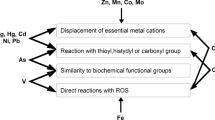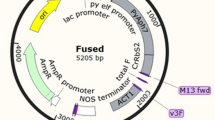Abstract
Non-photochemical quenching (NPQ) of photosystem II (PSII) fluorescence is one of the most important protective mechanisms enabling the survival of phototropic organisms under high-light conditions. A low-efficiency NPQ, characterized by weak NPQ induction capacity and a low level of protective NPQ, was observed in the marine angiosperm Zostera marina, which inhabits the shallow water regions. Furthermore, chlorophyll fluorescence and Western blot analysis verified that the fast-inducted component of NPQ, i.e., the energy-dependent quenching (qE), was not present in this species. In contrast with the lack of PSII antenna quenching sites for qE induction in brown algae and the lack of functional XC in Ulvophyceae belonging to green algae, all the antenna proteins and the functional XC are present in Z. marina. A novel underlying mechanism was observed that the limited construction of the trans-thylakoid proton gradient (ΔpH) caused by photoinactivation of the oxygen evolving complex (OEC) did not induce protonation of PsbS, thus explaining the inability to form quenching sites for qE induction. Although the ΔpH established under light exposure activated violaxanthin (V) de-epoxidase enzyme to catalyze conversion of V via antheraxanthin (A) and then to zeaxanthin (Z), the quenching capacity of de-epoxidized pigment was weak in Z. marina. We suggest that the low-efficiency NPQ was conducive to efficiently utilize the limited electrons to perform photosynthesis, resisting the adverse effect of OEC photoinactivation on the photosynthetic rate.








Similar content being viewed by others
References
Allen JF, Bennett J, Steinback KE, Arntzen CJ (1981) Chloroplast protein phosphorylation couples plastoquinone redox state to distribution of excitation energy between photosystems. Nature 291:25–29. https://doi.org/10.1038/291025a0
Avenson T, Cruz J, Kanazawa A, Kramer D (2005) Regulating the proton budget of higher plant photosynthesis. Proc Natl Acad Sci USA 102:9709–9713. https://doi.org/10.1073/pnas.0503952102
Bergantino E, Segalla A, Brunetta A, Teardo E, Rigoni F, Giacometti GM, Szabò I (2003) Light- and pH-dependent structural changes in the PsbS subunit of photosystem II. Proc Natl Acad Sci USA 100:15265–15270. https://doi.org/10.1073/pnas.2533072100
Brestic M, Zivcak M, Kalaji HM, Carpentier R, Allakhverdiev SI (2012) Photosystem II thermostability in situ: environmentally induced acclimation and genotype-specific reactions in Triticum aestivum L. Plant Physiol Biochem 57:93–105. https://doi.org/10.1016/j.plaphy.2012.05.012
Carvalho FE, Ware MA, Ruban AV (2015) Quantifying the dynamics of light tolerance in Arabidopsis plants during ontogenesis. Plant Cell Environ 38:2603–2617. https://doi.org/10.1111/pce.12574
Christa G, Cruz S, Jahns P, De Vries J, Cartaxana P, Esteves AC, Serôdio J, Gould SB (2017) Photoprotection in a monophyletic branch of chlorophyte algae is independent of energy-dependent quenching (qE). New Phytol 214:1132–1144. https://doi.org/10.1111/nph.14435
Correa-Galvis V, Poschmann G, Melzer M, Stühler K, Jahns P (2016) PsbS interactions involved in the activation of energy dissipation in Arabidopsis. Nat Plants 2:15225. https://doi.org/10.1038/nplants.2015.225
Cruz JA, Sacksteder CA, Kanazawa A, Kramer DM (2015) Contribution of electric field (Δψ) to steady-state transthylakoid proton motive force (pmf) in vitro and in vivo. Control of pmf parsing into Δψ and ΔpH by ionic strength. Biochemistry 40:1226–1237. https://doi.org/10.1021/bi0018741
Dall’osto L, Cazzaniga S, Bressan M, Paleček D, Židek K, Niyogi KK, Fleming GR, Zigmantas D, Bassi R (2017) Two mechanisms for dissipation of excess light in monomeric and trimeric light-harvesting complexes. Nat Plants 3:17033. https://doi.org/10.1038/nplants.2017.33
Eugen K, Peter J (2017) The dynamics of energy dissipation and xanthophyll conversion in Arabidopsis indicate an indirect photoprotective role of zeaxanthin in slowly inducible and relaxing components of non-photochemical quenching of excitation energy. Front Plant Sci 8:2094. https://doi.org/10.3389/fpls.2017.02094
Fan M, Li M, Liu Z, Cao P, Pan X, Zhang H, Zhao X, Zhang J, Chang W (2015) Crystal structures of the PsbS protein essential for photoprotection in plants. Nat struct Mol Biol 22:729–735. https://doi.org/10.1038/nsmb.3068
Fristedt R, Willig A, Granath P, Crèvecoeur M, Rochaix J-D, Vener AV (2009) Phosphorylation of photosystem II controls functional macroscopic folding of photosynthetic membranes in Arabidopsis. Plant Cell 21:3950–3964. https://doi.org/10.1105/tpc.109.069435
Garcia-Mendoza E, Ocampo-Alvarez H, Govindjee (2011) Photoprotection in the brown alga Macrocystis pyrifera: evolutionary implications. J Photochem Photobiol B 104:377–385. https://doi.org/10.1016/j.jphotobiol.2011.04.004
Giovagnetti V, Ruban AV (2015) Discerning the effects of photoinhibition and photoprotection on the rate of oxygen evolution in Arabidopsis leaves. J Photochem Photobiol B 152:272–278. https://doi.org/10.1016/j.jphotobiol.2015.09.010
Giovagnetti V, Han G, Ware MA, Ungerer P, Qin X, Wang W-D, Kuang T, Shen J-R, Ruban AV (2018) A siphonous morphology affects light-harvesting modulation in the intertidal green macroalga Bryopsis corticulans (Ulvophyceae). Planta 247:1293–1306. https://doi.org/10.1007/s00425-018-2854-5
Goss R, Lepetit B (2015) Biodiversity of NPQ. J Plant Physiol 172:13–32. https://doi.org/10.1016/j.jplph.2014.03.004
Gray GR, Savitch LV, Ivanov AG, Huner NP (1996) Photosystem II excitation pressure and development of resistance to photoinhibition (II. Adjustment of photosynthetic capacity in winter wheat and winter rye). Plant Physiol 110:61–71. https://doi.org/10.2307/4276965
Gururani MA, Venkatesh J, Tran LSP (2015) Regulation of photosynthesis during abiotic stress-induced photoinhibition. Mol Plant 8:1304–1320. https://doi.org/10.1016/j.molp.2015.05.005
Hakala M, Tuominen I, Keränen M, Tyystjärvi T, Tyystjärvi E (2005) Evidence for the role of the oxygen-evolving manganese complex in photoinhibition of photosystem II. Biochim Biophys Acta 1706:68–80. https://doi.org/10.1016/j.bbabio.2004.09.001
Havaux M, García-Plazaola JI (2014) Beyond non-photochemical fluorescence quenching: the overlapping antioxidant functions of zeaxanthin and tocopherols. Springer, Netherlands
Herdean A, Teardo E, Nilsson AK, Pfeil BE, Johansson ON, Ünnep R, Nagy G, Zsiros O, Dana S, Solymosi K (2016) A voltage-dependent chloride channel fine-tunes photosynthesis in plants. Nat Commun 7:1–11. https://doi.org/10.1038/ncomms11654
Huang ZA, Jiang DA, Yang Y, Sun JW, Jin SH (2004) Effects of nitrogen deficiency on gas exchange, chlorophyll fluorescence, and antioxidant enzymes in leaves of rice plants. Photosynthetica 42:357–364. https://doi.org/10.1023/B:PHOT.0000046153.08935.4c
Huang W, Suorsa M, Zhang S-B (2018) In vivo regulation of thylakoid proton motive force in immature leaves. Photosynth Res 138:207–218. https://doi.org/10.1007/s11120-018-0565-1
Hurry V, Anderson JM, Badger MR, Price GD (1996) Reduced levels of cytochrome b 6/f in transgenic tobacco increases the excitation pressure on photosystem II without increasing sensitivity to photoinhibition in vivo. Photosynth Res 50:159–169. https://doi.org/10.1007/BF00014886
Ifuku K, Ishihara S, Sato F (2010) Molecular functions of oxygen-evolving complex family proteins in photosynthetic electron flow. J Integr Plant Biol 52:723–734. https://doi.org/10.1111/j.1744-7909.2010.00976.x
Jahns P, Latowski D, Strzalka K (2009) Mechanism and regulation of the violaxanthin cycle: the role of antenna proteins and membrane lipids. Biochim Biophys Acta 1787:3–14. https://doi.org/10.1016/j.bbabio.2008.09.013
Jansson S (1999) A guide to the Lhc genes and their relatives in Arabidopsis. Trends Plant Sci 4:236–240. https://doi.org/10.1016/S1360-1385(99)01419-3
Jiang M, Ren L, Lian H, Liu Y, Chen H (2016) Novel insight into the mechanism underlying light-controlled anthocyanin accumulation in eggplant (Solanum melongena L.). Plant Sci 249:46–58. https://doi.org/10.1016/j.plantsci.2016.04.001
Johnson MP, Zia A, Ruban AV (2012) Elevated ΔpH restores rapidly reversible photoprotective energy dissipation in Arabidopsis chloroplasts deficient in lutein and xanthophyll cycle activity. Planta 235:193–204. https://doi.org/10.1007/s00425-011-1502-0
Kanazawa A, Kramer DM (2002) In vivo modulation of nonphotochemical exciton quenching (NPQ) by regulation of the chloroplast ATP synthase. Proc Natl Acad Sci USA 99:12789–12794. https://doi.org/10.1073/pnas.182427499
Krause GH (1988) Photoinhibition of photosynthesis. An evaluation of damaging and protective mechanisms. Physiol Plant 74:566–574. https://doi.org/10.1111/j.1399-3054.1988.tb02020.x
Krause GH, Vernotte C, Briantais JM (1982) Photoinduced quenching of chlorophyll fluorescence in intact chloroplasts and algae. Resolution into two components. Biochim Biophys Acta 679:116–124. https://doi.org/10.1016/0005-2728(82)90262-6
Li X-P, Müller-Moulé P, Gilmore AM, Niyogi KK (2002) PsbS-dependent enhancement of feedback de-excitation protects photosystem II from photoinhibition. Proc Natl Acad Sci USA 99:15222–15227. https://doi.org/10.1073/pnas.232447699
Müller P, Li X-P, Niyogi KK (2001) Non-photochemical quenching. A response to excess light energy. Plant Physiol 125:1558–1566. https://doi.org/10.1104/pp.125.4.1558
Murchie EH, Lawson T (2013) Chlorophyll fluorescence analysis: a guide to good practice and understanding some new applications. J Exp Bot 64:3983–3998. https://doi.org/10.1093/jxb/ert208
Nilkens M, Kress E, Lambrev P, Miloslavina Y, Müller M, Holzwarth AR, Jahns P (2010) Identification of a slowly inducible zeaxanthin-dependent component of non-photochemical quenching of chlorophyll fluorescence generated under steady-state conditions in Arabidopsis. Biochim Biophys Acta 1797:466–475. https://doi.org/10.13039/501100003484
Nishimura T, Nagao R, Noguchi T, Nield J, Sato F, Ifuku K (2016) The N-terminal sequence of the extrinsic PsbP protein modulates the redox potential of Cyt b559 in photosystem II. Sci Rep 6:21490. https://doi.org/10.1038/srep21490
Ocampo-Alvarez H, García-Mendoza E, Govindjee (2013) Antagonist effect between violaxanthin and de-epoxidated pigments in nonphotochemical quenching induction in the qE deficient brown alga Macrocystis pyrifera. Biochim Biophys Acta 1827:427–437. https://doi.org/10.1016/j.bbabio.2012.12.006
Olsen JL, Rouzé P, Verhelst B, Lin Y-C, Bayer T, Collen J, Dattolo E, De Paoli E, Dittami S, Maumus F (2016) The genome of the seagrass Zostera marina reveals angiosperm adaptation to the sea. Nature 530:331–335. https://doi.org/10.1038/nature16548
Oxborough K, Baker NR (1997) Resolving chlorophyll a fluorescence images of photosynthetic efficiency into photochemical and non-photochemical components—calculation of qP and Fv′/Fm′; without measuring Fo. Photosynth Res 54:135–142. https://doi.org/10.1023/A:1005936823310
Peng T, Moriguchi T (2013) The molecular network regulating the coloration in apple. Sci Hortic 163:1–9. https://doi.org/10.1016/j.scienta.2013.06.005
Porra R, Thompson W, Kriedemann P (1989) Determination of accurate extinction coefficients and simultaneous equations for assaying chlorophylls a and b extracted with four different solvents: verification of the concentration of chlorophyll standards by atomic absorption spectroscopy. Biochim Biophys Acta 975:384–394
Ruban AV, Belgio E (2014) The relationship between maximum tolerated light intensity and photoprotective energy dissipation in the photosynthetic antenna: chloroplast gains and losses. Philos Trans R Soc Lond 369:20130222. https://doi.org/10.1098/rstb.2013.0222
Ruban AV, Murchie EH (2012) Assessing the photoprotective effectiveness of non-photochemical chlorophyll fluorescence quenching: a new approach. Biochim Biophys Acta 1817:977–982. https://doi.org/10.1016/j.bbabio.2012.03.026
Sacharz J, Giovagnetti V, Ungerer P, Mastroianni G, Ruban AV (2017) The xanthophyll cycle affects reversible interactions between PsbS and light-harvesting complex II to control non-photochemical quenching. Nat Plants 3:1–9. https://doi.org/10.1038/nplants.2016.225
Schreiber U, Klughammer C (2008) New accessory for the DUAL-PAM-100: the P515/535 module and examples of its application. PAM Appl Notes 1:1–10
Schubert N, Colombo-Pallota MF, Enríquez S (2015) Leaf and canopy scale characterization of the photoprotective response to high-light stress of the seagrass Thalassia testudinum. Limnol Oceanogr 60:286–302. https://doi.org/10.1002/lno.10024
Strasser BJ (1997) Donor side capacity of photosystem II probed by chlorophyll a fluorescence transients. Photosynth Res 52:147–155. https://doi.org/10.1023/A:1005896029778
Strasser RJ, Tsimilli-Michael M, Qiang S, Goltsev V (2010) Simultaneous in vivo recording of prompt and delayed fluorescence and 820-nm reflection changes during drying and after rehydration of the resurrection plant Haberlea rhodopensis. Biochim Biophys Acta 1797:1313–1326. https://doi.org/10.1016/j.bbabio.2010.03.008
Takizawa K, Kanazawa A, Kramer DM (2010) Depletion of stromal P(i) induces high ‘energy-dependent’ antenna exciton quenching (q(E)) by decreasing proton conductivity at CF(O)-CF(1) ATP synthase. Plant Cell Environ 31:235–243. https://doi.org/10.1111/j.1365-3040.2007.01753.x
Tan Y, Zhang QS, Zhao W, Liu Z, Ma MY, Zhong MY, Wang MX, Xu B (2020) Chlororespiration serves as photoprotection for photo-Inactivated oxygen-evolving complex in Zostera marina, a marine angiosperm. Plant Cell Physiol. https://doi.org/10.1093/pcp/pcaa075
Ware MA, Dall’Osto L, Ruban AV (2016) An in vivo quantitative comparison of photoprotection in Arabidopsis xanthophyll mutants. Front Plant Sci 7:841. https://doi.org/10.3389/fpls.2016.00841
Yang XQ, Zhang QS, Zhang D, Sheng ZT (2017) Light intensity dependent photosynthetic electron transport in eelgrass (Zostera marina L.). Plant Physiol Biochem 113:168–176. https://doi.org/10.1016/j.plaphy.2017.02.011
Zeiger E (1998) Role of zeaxanthin in blue light photoreception and the modulation of light-CO. J Exp Bot 49:433–442. https://doi.org/10.1093/jexbot/49.suppl_1.433
Zivcak M, Kalaji HM, Shao H-B, Olsovska K, Brestic M (2014) Photosynthetic proton and electron transport in wheat leaves under prolonged moderate drought stress. J Photochem Photobiol B 137:107–115. https://doi.org/10.1016/j.jphotobiol.2014.01.007
Acknowledgements
This work was supported by the National Natural Science Foundation of China (Grant No. 41376154) and the Yantai Municipal Key Research and Development Project (Grant No. 2019XDHZ096).
Author information
Authors and Affiliations
Contributions
WZ and QSZ conceived and designed the research, WZ, YT, and ZL conducted the experiments and the data analysis, WZ and QSZ wrote the manuscript. All authors discussed the results and commented on the manuscript.
Corresponding author
Ethics declarations
Conflict of interest
The authors declare that they have no conflict of interest in this work.
Additional information
Publisher's Note
Springer Nature remains neutral with regard to jurisdictional claims in published maps and institutional affiliations.
Supplementary Information
Below is the link to the electronic supplementary material.
Rights and permissions
About this article
Cite this article
Zhao, W., Zhang, Q.S., Tan, Y. et al. An underlying mechanism of qE deficiency in marine angiosperm Zostera marina. Photosynth Res 148, 87–99 (2021). https://doi.org/10.1007/s11120-021-00836-0
Received:
Accepted:
Published:
Issue Date:
DOI: https://doi.org/10.1007/s11120-021-00836-0




